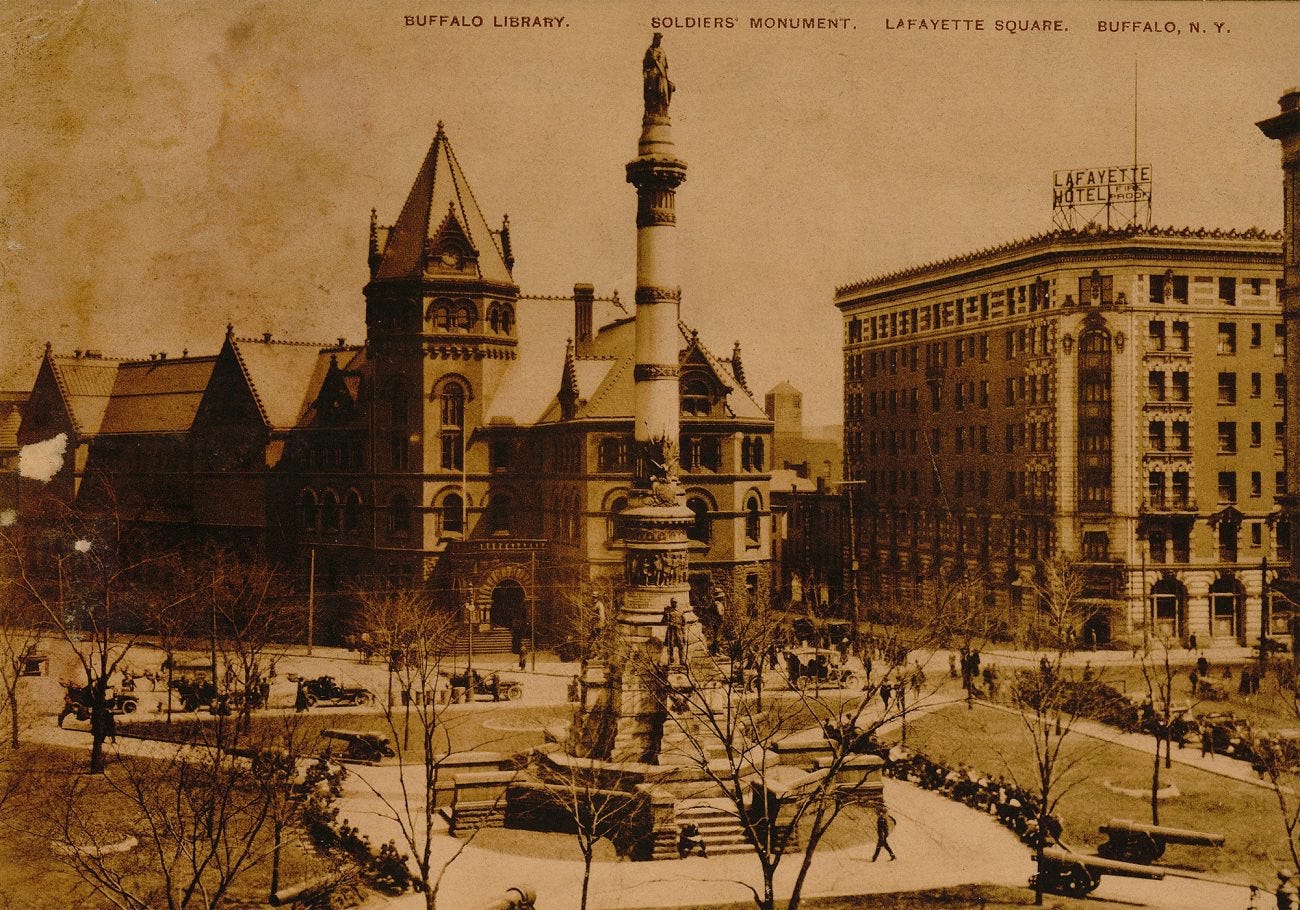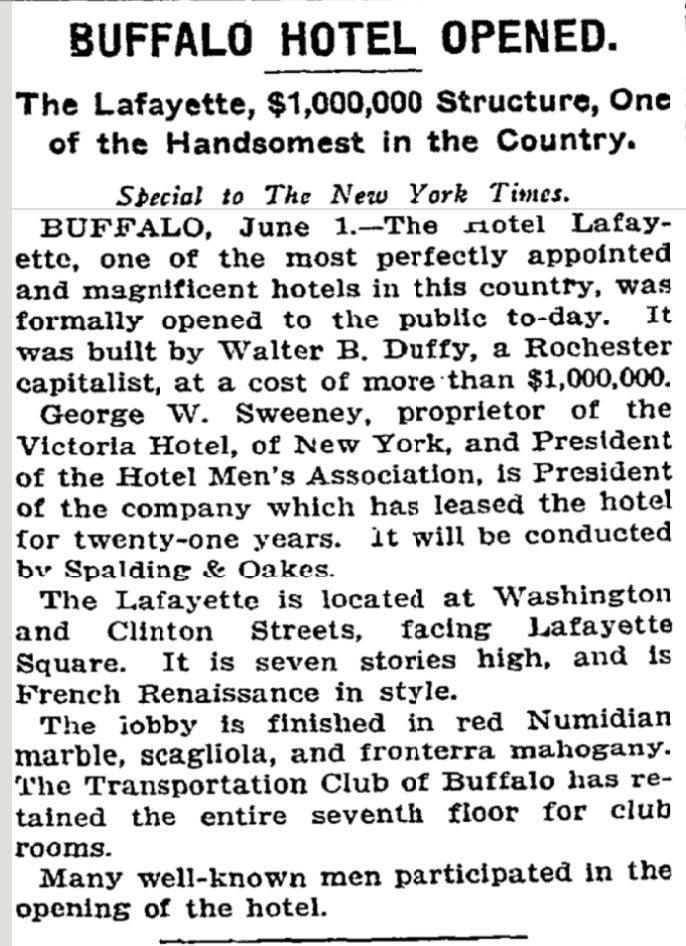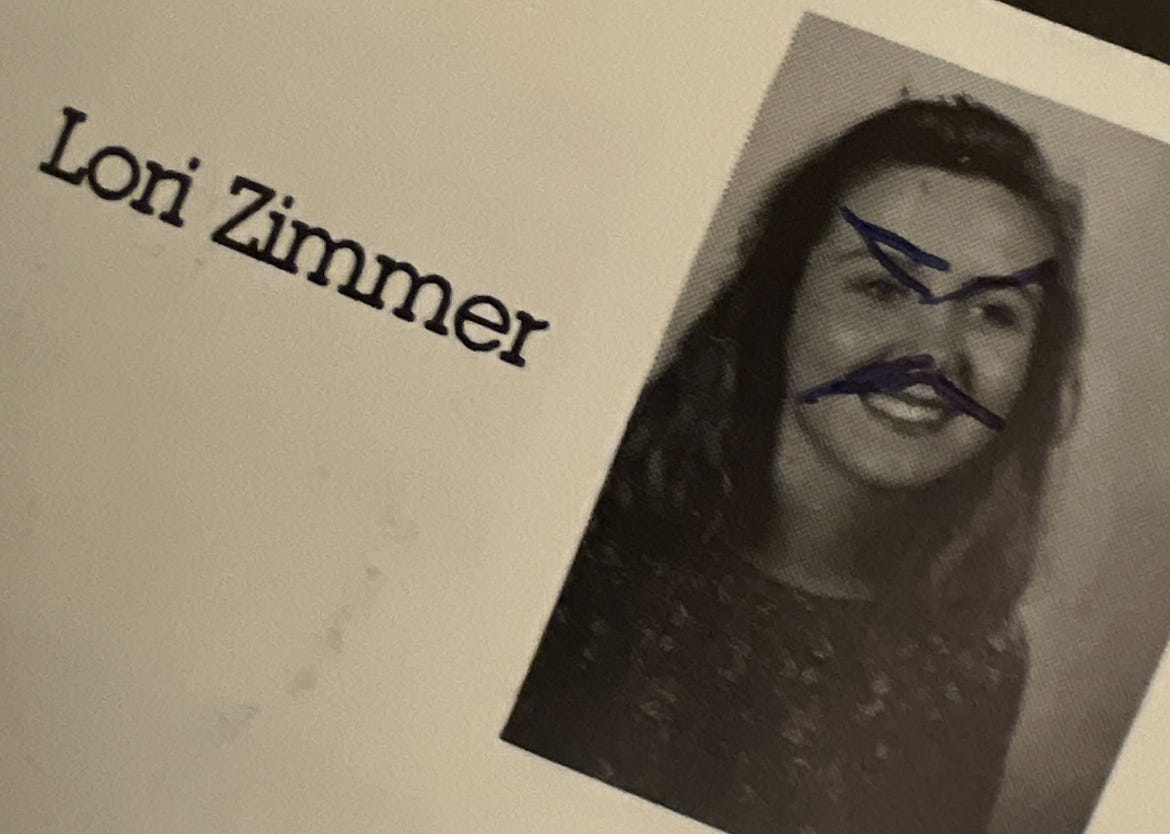America's First Female Architect, Louise Blanchard Bethune, Deserves to be Celebrated
A Proposal for Buffalo, New York: Louise Bethune Day
Architecture has long been a male dominated field. Even today, female students, who make up roughly half the enrollment in architecture programs across the United States, comprise only 27 percent of the country’s registered architects in 2023. Though several women have risen to the level of “starchitect” in recent years, even I, a history researcher who sometimes like to think she knows everything, am ashamed to say that I did not know the name of the country’s first female architect until I began researching I’m Not Your Muse a couple years ago. You can imagine my utter disgust (with myself ) when I learned that Louise Blanchard Bethune, officially the country’s first female architect after receiving her architecture license in October of 1881, had not only practiced architecture in my hometown of Buffalo, New York, but had also been the designer of one of my favorite buildings, the Hotel Lafayette (also called the Lafayette Hotel, depending on the decade). To a lifelong history nerd like me, this was shameful. Bad Lori.
I became aware of the splendor of Buffalo architecture in the summer before high school, when I was finally allowed to take the bus downtown with my friends to see the Goo Goo Dolls at a free outdoor concert without any parents at “Thursday in the Square”(I found a video of the concert on youtube which is a wild ride back to 1993). It was my first up-close experience with the faded glory of Buffalo’s “skyscrapers”, and Bethune’s masterpiece was front and center. Overlooking Lafayette Square, I noticed the French Renaissance beauty right away, not because the ornate white terra cotta trim complimented the red brick gorgeously, but because of the giant pawn shop that had taken residence in the lobby decades before. It looked like an imposition, even though by the 90s, the hotel had functioned as an SRO for decades. A couple years later, I got a first hand look at just how derelict Bethune’s masterpiece had become, when I went to a rave in the basement in the dead of winter. The basement ceiling had become so dilapidated that snow blew in streams through the gaping holes onto the dancefloor all night. The Hotel Lafayette had seen better days.
When the hotel opened in 1904, the New York Times lauded the Hotel Lafayette as “one of the most perfectly appointed and magnificent hotels in this country,” known for modern amenities such as a telephone and hot water in every room (they did not, however, praise the architect. Or mention her. At all). Bethune was over twenty years into her career, having become the first woman elected into the Western Association of Architects and the American Institute of Architects over a decade prior, largely in respect for her innovative design of the Terminal A portion of the Niagara Falls hydroelectric power plant, which she worked on closely with Nikola Telsa. In fact, by the time Hotel Lafayette had opened, Louise Bethune was a respected and successful architect, whose firm Bethune, Bethune & Fuchs had left their mark with over one hundred civic, commercial, and mixed-use buildings across the Buffalo area.


Aside from her success in business, Bethune was also somewhat of a local icon. “The bicycle craze” hit America in the 1890s, offering an affordable and personal method of transportation, which in turn gave women a new level of independence. Bethune was the first in Buffalo to own a “woman’s bicycle” and riding outfit (which included the scandal of bloomers – pants!), and encouraged other women to follow suit by founding the Women’s Wheel and Athletic Club. She vocally fought against wage disparity and encouraged women to enter the architecture field. When she died in 1915, almost two hundred women had become architects in the United States.
One would think that becoming the nation’s first female architect would warrant passages in history books, or at the very least, she would have become a local hero in Buffalo. My teachers all made sure that we knew all about the contributions that Frank Lloyd Wright, Frederick Law Olmsted and Calvert Vaux gave to Buffalo. No school year was complete without a trip to the Darwin Martin House, or to the vistas of Delaware Park – or if you were really lucky, Graycliff. We bought souvenirs of mousepads and coffee mugs imprinted with FLW’s classic organic shapes of impossibly thin lines, treasured for his Buffalo connection. He made buildings here. It was exciting.
But not as exciting as it would have been to a little girl with a voracious appetite for learning (moi), to not only know about Bethune’s existence, but that she was ours, a Buffalonian. I can imagine the nerdy enthusiasm of dressing up as Bethune for school projects (GT’s Night of the Notables iykyk), or even better, Halloween (I can see little creative Lori fashioning a pair of bike riding bloomers out of an old skirt, and carrying a T-square along with my Trick-or-Treating bag). The amount of hometown pride would have been astounding. The inspiration and aspirations that would have been impressed upon little girls growing up in Buffalo, and the lesson of excellence it would have given the boys. What a missed opportunity. Honestly, I hold some guilt for not knowing who Bethune was. How and why did I, the self-proclaimed research nerd, not know who first female architect was, or this tidbit of Buffalo history? More importantly, why had I never thought to even ask? (Short story: internalized misogyny. Society has done a number on us).
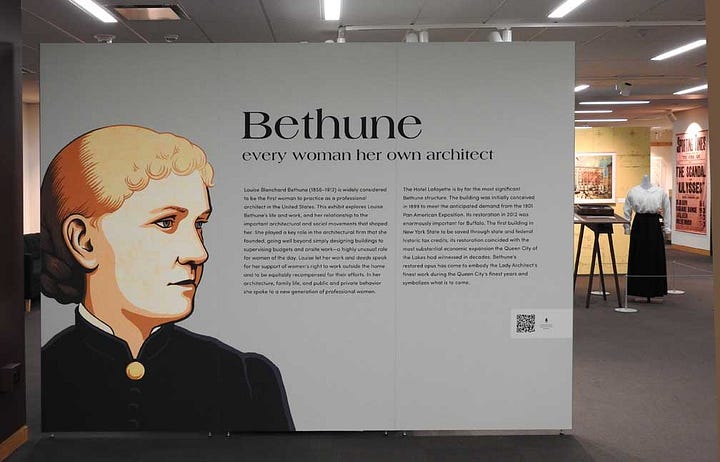
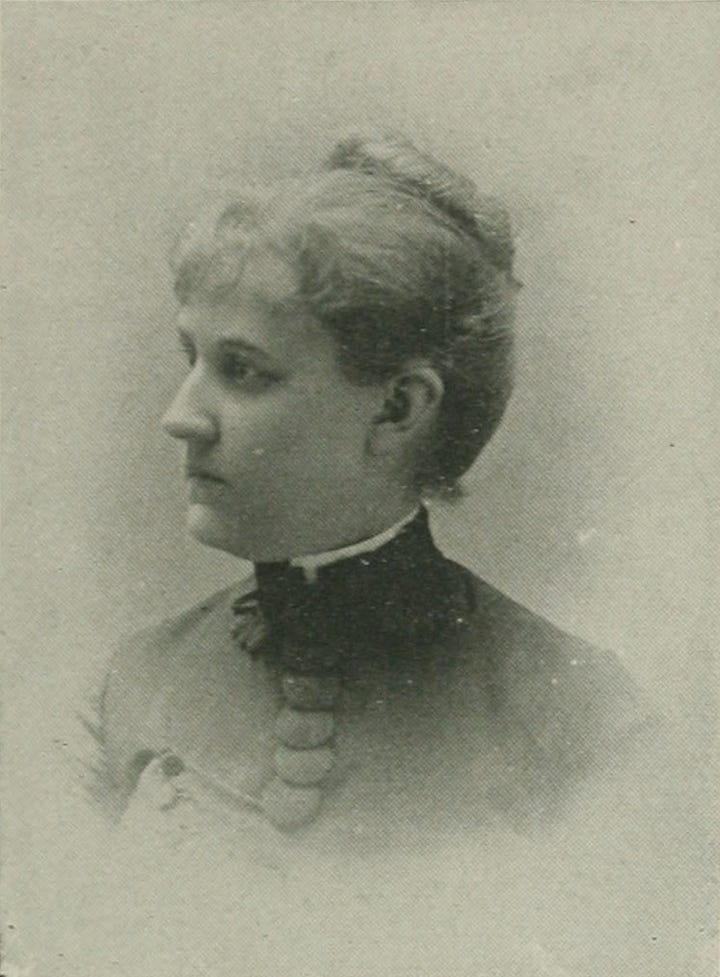
Eventually, Buffalo did do right by her. Sort of. In 2012, the Hotel Lafayette was given a glorious renovation and restoration, which reinstated it as a crown jewel of downtown (for a couple years, at least). At the centennial of Bethune’s death in 2013, architecture groups gathered in Forest Lawn Cemetery on a freezing December day to place a memorial marker on her grave. Architect and researcher Kelly Hayes McAlonie honored Bethune with her first comprehensive exhibition at the University of Buffalo, as well as published the well-researched biography, Louise Blanchard Bethune: Every Woman Her Own Architect in 2023.
That is hardly enough. Bethune deserves more. And so, I have a proposal for the city of Buffalo: Louise Blanchard Bethune Day, to take place every July 21st, Bethune’s birthdate in 1856, as well as peak Buffalo Summer Perfection. The day would begin with a gathering in Forest Lawn Cemetery to pay respects to Bethune and her husband (and architectural partner) at their gravesite in Section 10, followed by a leisurely community bike ride (Louise would have wanted it that way) down Main Street (or probably Delaware Avenue for a smoother ride) ending at Lafayette Square. We’ll bring our lunches are have a big picnic while we admire Bethune’s greatest hit. Who’s in?
In un-fun news, four out of my five books are included in the library of stolen works that Meta used to train its AI. Writers are already notoriously underpaid (most of my research and writing has been published for free, including this right here). Training AI from our hard work (my research for these books equates literal years of work) will certainly be felt in my wallet, when readers grow accustomed to AI generated books and articles. But it will also be felt in the consumption of knowledge. Rather than the views and stylings of artists and authors, you’ll be reading books, prose (I feel weird even calling it that), and references from the viewpoint of the owners of AI aggregate companies, and we know how “cool” corporate art is. (it's not).
For the past fifteen years (what is time?!), I’ve had a front row seat to the torturous and slow death that is making a living wage as a writer. I had missed the heyday of print magazines by a decade, but its subsequent death still lingered. When I entered the field in 2010, blogs were the new, fresh way to consume media. It was exciting to share writing and stories with strangers (as difficult as it was to monetize our work), before the rise of social media reduced our attention spans to ten second intervals.




To be fair, my writing career started out completely unpaid (and apparently, ending unpaid right here too). In the golden years of blogs, mine was Art Nerd New York, and for six years, I was writing five or more articles a day myself, again, unpaid, all in hopes I would establish a voice in the expanse of New York. Plus, I absolutely loved it. (anyone remember the epic launch party I had?) I then got my own column for the short-lived Patrick McMullan Magazine where I interviewed fun artists and semi-celebrities, again, unpaid, but a wild time. I was finally established enough to get the gigs that could pay my New York rent, but only a couple years later, the rates set by my regular clients began to get cut, little by little. When they fell to 50% of my initial rate, I quit them all. I hung on as long as I could. Most of the other freelancers I knew had given up and taken full time jobs at the first round of cuts, but I was stubborn. And I loved it. I was living my dream.
Books were how my writing could finally support me. When I got an agent, and she sold my third book, I knew I had a serious path. In the six years since I signed with her, I’ve seen the publishing industry change, and the advent of AI is pushing it even faster into the ground. People always say that the world loves authors and will always need books, but AI is already writing them (and people are buying them). Although are still new, we’ve already seen how AI generated books can go utterly wrong for both writers and readers. Like when nine AI generated memoirs “by” Kathleen Hanna came out the same day hers did, or when an AI generated mushroom foraging guide chock full of nonsensical misinformation put a family in the hospital. Books are so important. I cannot for the life of me understand why we’re letting them die. Support living writers while you can. Buy their books. Share them on social media. Leave reviews on Amazon and GoodReads. You’ll miss us when we’re gone.
Last, but not least, the playlist. I’ve been obsessing over that video of the Goo Goo Dolls show (or this even worse quality one). I can’t stop scrutinizing it, scanning faces in the crowd, looking for familiar faces, old crushes - OR - a glimpse of my friends, or me, not quite fourteen, living in the moment, in an analog world. I’d love to see that version of me. Anyway, here’s a nostalgic trip to the Lori of 1993.




